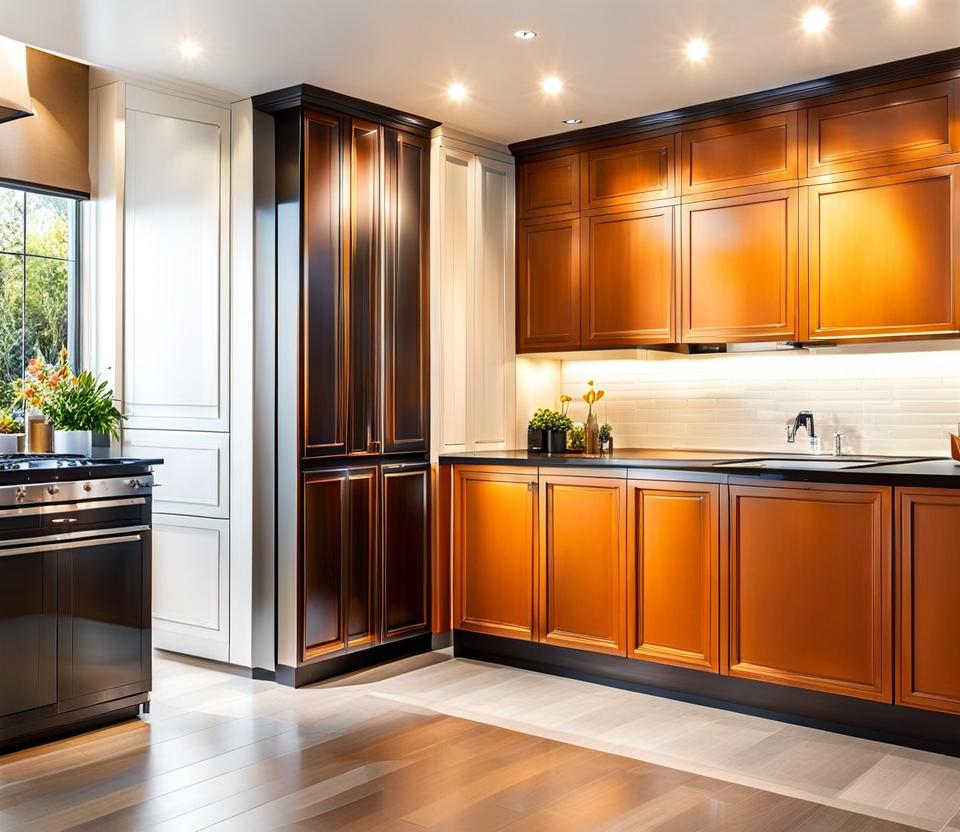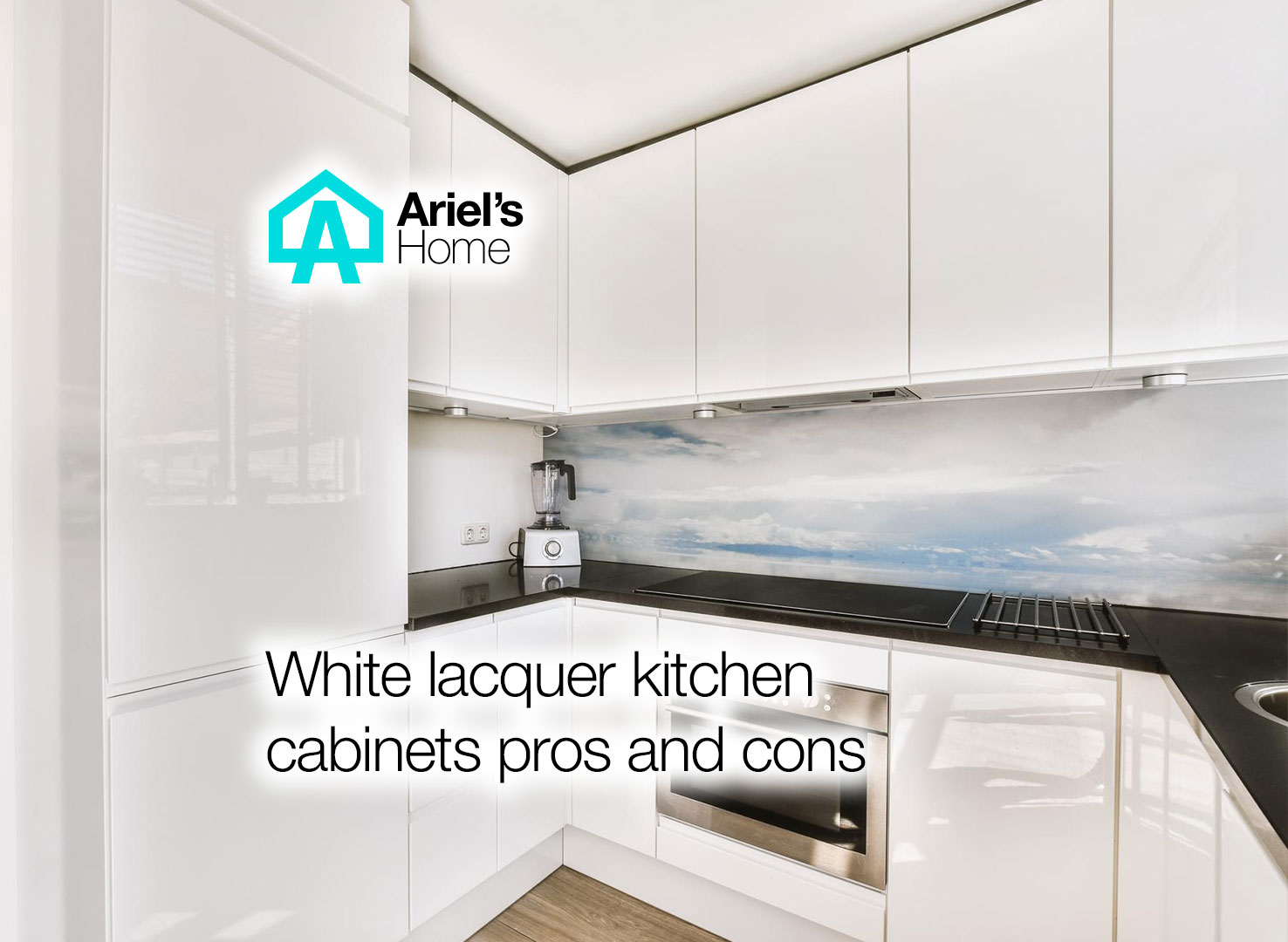The Allure of Lacquer Kitchen Cabinets: Lacquer Kitchen Cabinets Pros And Cons

Lacquer kitchen cabinets have become a popular choice for homeowners seeking a sleek and modern aesthetic. They offer a distinct visual appeal that can transform a kitchen into a sophisticated and inviting space. Their smooth, high-gloss finish reflects light, creating a sense of spaciousness and elegance.
Lacquer Finishes and Their Impact on Kitchen Design
The choice of lacquer finish significantly impacts the overall look and feel of a kitchen. Lacquer cabinets are available in a wide range of colors and finishes, allowing for endless possibilities in kitchen design.
- High Gloss: This finish reflects light intensely, creating a dramatic and luxurious look. High gloss lacquer cabinets are ideal for modern kitchens with clean lines and minimal clutter. They make the space appear larger and brighter.
- Matte: Matte lacquer offers a softer, more understated look compared to high gloss. It provides a subtle sheen, minimizing reflections and creating a calming ambiance. Matte finishes are suitable for contemporary kitchens with warm tones and natural elements.
- Textured: Textured lacquer adds depth and dimension to cabinets. It can mimic the look of wood grain, creating a rustic or traditional feel. Textured finishes are ideal for kitchens with a farmhouse or vintage aesthetic.
Lacquer Cabinets and Kitchen Styles
Lacquer cabinets seamlessly integrate into various kitchen styles, enhancing their unique characteristics.
- Minimalist: Lacquer cabinets in high gloss white or black complement the minimalist aesthetic’s clean lines and simplicity. Their sleek surfaces create a sense of order and tranquility.
- Contemporary: Lacquer cabinets in bold colors or metallic finishes add a touch of sophistication to contemporary kitchens. They can be paired with sleek countertops and modern appliances to create a cohesive and stylish space.
- Traditional: Lacquer cabinets with a textured finish or distressed look can enhance the warmth and elegance of traditional kitchens. They can be paired with ornate hardware and decorative accents to create a timeless and inviting ambiance.
Durability and Maintenance

Lacquer kitchen cabinets are known for their sleek, glossy finish, but their durability and ease of maintenance are equally important considerations. These cabinets offer a unique combination of beauty and practicality, making them a popular choice for modern kitchens.
Durability
Lacquer cabinets are renowned for their durability. Their smooth, non-porous surface makes them highly resistant to scratches, stains, and heat. Unlike wood cabinets, which can easily dent or scratch, lacquer cabinets maintain their pristine appearance even with regular use.
- Scratch Resistance: Lacquer’s hard, protective coating provides excellent scratch resistance. It can withstand the daily wear and tear of cooking and cleaning without showing significant signs of damage.
- Stain Resistance: Lacquer’s non-porous surface repels spills and stains. This makes cleaning up messes a breeze, preventing permanent discoloration or damage.
- Heat Resistance: Lacquer cabinets can tolerate moderate heat exposure. However, it’s still advisable to use trivets or hot pads to protect the surface from direct contact with hot pots and pans.
Maintenance
Lacquer cabinets are relatively easy to maintain, requiring minimal effort to keep them looking their best. Regular cleaning and proper care can preserve their beauty and longevity.
- Gentle Cleaning: Use a soft, damp cloth and a mild cleaning agent, such as dish soap diluted in warm water, to wipe down the cabinet surfaces. Avoid harsh chemicals, abrasive cleaners, or scouring pads, as these can damage the lacquer finish.
- Regular Cleaning: Clean your lacquer cabinets regularly, especially after cooking or spills. This will prevent dirt and grime from accumulating and potentially damaging the finish.
- Avoid Abrasive Materials: Never use steel wool, abrasive sponges, or harsh chemicals on your lacquer cabinets. These can scratch, dull, or damage the protective coating.
Preventing Damage, Lacquer kitchen cabinets pros and cons
Taking proactive measures can help prevent damage and preserve the beauty of your lacquer cabinets over time.
- Use Coasters: Place coasters under drinks and hot beverages to prevent rings or stains on the cabinet surfaces.
- Handle With Care: Be gentle when opening and closing cabinet doors and drawers. Avoid slamming or banging them, as this can cause damage to the finish.
- Protect From Moisture: While lacquer cabinets are water-resistant, prolonged exposure to moisture can cause damage. Wipe up spills promptly and avoid placing wet items directly on the cabinet surfaces.
Considerations and Trade-offs

While lacquer kitchen cabinets offer a sleek and sophisticated aesthetic, it’s crucial to weigh their potential drawbacks alongside their benefits. Making an informed decision requires understanding the trade-offs associated with this choice, from maintenance considerations to cost implications and environmental impact.
Fingerprint Susceptibility and Maintenance
Lacquer’s high-gloss finish, while visually appealing, can be prone to fingerprints and smudges, especially in high-traffic areas. Regular cleaning is essential to maintain their pristine appearance. This can involve using specialized cleaning products and avoiding harsh chemicals that could damage the finish. Additionally, lacquer cabinets may require more frequent touch-ups to address scratches or minor blemishes.
Cost Comparison with Other Cabinet Materials
Lacquer cabinets generally fall on the higher end of the cost spectrum compared to other cabinet materials. The cost can vary based on factors such as the complexity of the design, the size of the kitchen, and the quality of the lacquer finish. For instance, a custom-designed lacquer kitchen with intricate detailing and a high-quality finish will naturally be more expensive than a standard, pre-fabricated option.
Here’s a general cost comparison for different cabinet materials:
| Cabinet Material | Average Cost per Linear Foot |
|---|---|
| Lacquer | $400-$700+ |
| Painted | $200-$400 |
| Thermofoil | $150-$300 |
| Wood Veneer | $250-$500 |
It’s important to note that these are just average ranges, and actual costs can fluctuate depending on the specific project and the contractor’s pricing.
Environmental Impact of Lacquer Production
Lacquer production can have an environmental impact, as it involves the use of solvents and other chemicals. However, the environmental impact can be mitigated by choosing sustainably sourced materials and opting for low-VOC (volatile organic compound) lacquers.
For example, choosing cabinets made from reclaimed wood or sustainably harvested wood can significantly reduce the environmental footprint. Similarly, using low-VOC lacquers can minimize the release of harmful chemicals into the air.
Lacquer kitchen cabinets pros and cons – Lacquer kitchen cabinets offer a sleek, modern aesthetic and are easy to clean, but their smooth surface can be prone to scratches. Maximizing storage space within these cabinets is crucial, and a pop it adjustable sliding cabinet organizer can be a game-changer.
This clever organizer allows you to easily access even the deepest corners of your cabinets, making the most of your space while preserving the pristine look of your lacquer finish.
Lacquer kitchen cabinets offer a sleek, modern aesthetic and are highly durable, but they can be more expensive than other options. If you prefer a more timeless look, consider old fashioned kitchen cabinets , which often feature intricate details and traditional craftsmanship.
Ultimately, the best choice depends on your personal style and budget, as well as the overall design of your kitchen.
